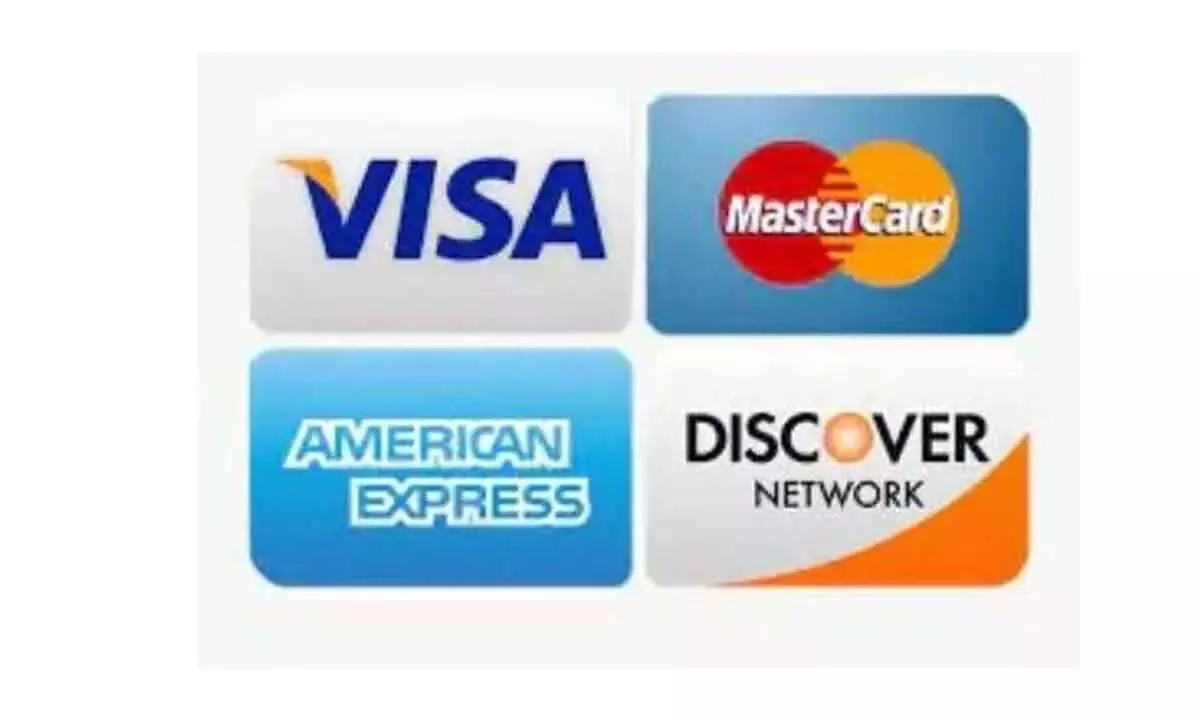Credit card adoption boosting economic expansion in India

The global credit card industry reached a market valuation of $1.14 trillion in 2023, with a projected growth rate of 8.3 per cent annually over the next five years.
North America dominates the market, holding a 45 per cent share of the total credit card revenue, followed by Europe at 25 per cent and Asia-Pacific at 22 per cent. In emerging markets like India and Brazil, the credit card market is expected to expand at an impressive rate of 10-12 per cent annually, largely due to increasing financial inclusion.
Over 2.8 billion credit cards are currently in circulation worldwide, with approximately 191 million credit card holders in the United States alone. By 2027, the total number of credit card holders worldwide is anticipated to reach 3.4 billion, driven by global economic growth and digital payment adoption. The online shopping sector, projected to grow by 15.4 per cent in 2024, remains a major driver for credit card usage, especially in urban regions. In 2024, credit cards are estimated to support 65 per cent of all e-commerce transactions globally, highlighting their essential role in digital marketplaces.
With technological advancements, the average transaction speed has improved by 20 per cent since 2021, making them a preferred choice for quick transactions. In 2024, the global credit card transactions were in excess of $32 trillion, representing a steady annual growth of 6.2 per cent in transaction value since 2020. Contactless payments have surged, now making up 35 per cent of all credit card transactions, driven by consumer demand for faster and safer checkout experiences. Visa remains the largest credit card network globally, capturing nearly 53 per cent of the market share by transaction volume, followed by Mastercard at 25 per cent. American Express holds a 10 per cent share, predominantly in the U.S., where its high-spending clientele drives significant transaction value. The network fee revenue for Visa and Mastercard alone reached $12.4 billion in 2023, reflecting the lucrative nature of transaction-based business models.
In a good development, credit card frauds declined by 5.7 per cent in the past two years. This is attributed to advancements in chip technology and enhanced security features. The exponential rise of credit card usage since the 1980s, propelled by factors such as convenience, security and non-monetary benefits, has reshaped global economies, with India mirroring this trend. For merchants, credit card transactions provide enhanced security compared to traditional payment methods like cheques, mitigating the risk of fraud and theft. The burden of assessing individual creditworthiness now rests with banks, relieving merchants of this responsibility. The operational cycle of credit cards involves multiple stakeholders, including cardholders, issuing banks, merchant establishments, acquiring banks, and independent sales organizations. This intricate network ensures seamless transactions, underpinned by credit card associations and transaction networks.
While credit cards offer numerous advantages, they also present inherent risks. The misinterpretation of minimum payments often leads to underestimated balances and accumulating interest charges. Concealed expenses like late payment fees and processing charges further exacerbate financial burdens, potentially impacting credit scores and borrowing capabilities. The revolving credit nature of credit cards tempts users to overspend, fostering a cycle of debt exacerbated by high-interest rates. Despite some progress, credit card fraud remains a persistent threat, especially because of technological advancements and unauthorized access to sensitive information. Despite vigilant monitoring, fraud incidents highlight the importance of robust security measures and consumer awareness. In response to these challenges, governments and regulatory bodies have implemented laws and regulations to safeguard consumers and promote responsible credit card usage. However, concerns persist regarding consumer comprehension of credit card costs and implications, necessitating ongoing education and awareness initiatives. Due to their transactional effectiveness, customer access to credit, and general consumer confidence in the payment system, credit cards are a major force in the world economy. Card adoption and use are positively correlated with economic expansion, which raises the GDP.
In 2024, co-branded credit cards with retail brands like Amazon and Walmart saw a nine per cent increase in adoption, driven by customer loyalty and unique benefits. Sustainable credit cards, made from biodegradable or recycled materials, have entered the market, appealing to eco-conscious consumers. Virtual credit cards saw a 34 per cent increase in adoption as more people use them for secure, single-use transactions online. Gen Z consumers are quickly adopting “flexible” cards with features like adjustable credit limits, with 32 per cent preferring these options over traditional cards. Data-driven credit card rewards programs have become popular, with 43 per cent of issuers now using AI to personalize offers based on consumer spending patterns.
BNPL services are increasingly incorporated into credit cards, allowing cardholders to convert purchases into installment plans directly from the card’s interface.


